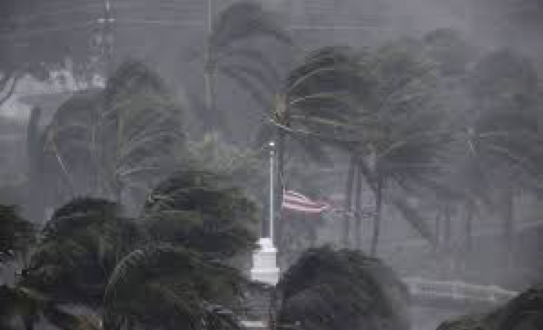CommentsNEW GEOGRAPHY--When Hurricane Harvey flooded Houston, followed by a strong hurricane in Florida, much of the media response indicated that the severe weather was a sign of catastrophic climate change, payback for mass suburbanization — and even a backlash by Mother Nature against the election of President Donald Trump.
Yet, these assumptions are often exaggerated. Although climate change could well worsen these incidents, this recent surge of hurricanes followed a decade of relative quiescence. Hurricanes, like droughts and heavy rains, are part of the reality along the Gulf Coast and the South Atlantic, just as droughts and earthquakes plague those of us who live in Southern California.
The best response to disasters is not to advance hysterical claims about impending doom, but rather resilience. This means placing primary attention on bolstering our defenses against catastrophic events, whether in protecting against floods, ice storms, earthquakes or droughts.
The limits of original sin
Days after Hurricane Harvey hit, Quartz opined that “Houston’s flooding shows what happens when you ignore science and let developers run rampant.” The Guardian’s climate columnist, George Monbiot, even portrayed the event as a kind of payback for being the world capital of planet-destroying climate change.
In ascribing every disaster — even the Syrian civil war — to human-caused warming, we may be venturing into something more akin to the religious notion of original sin than to rational science. We should want to reduce greenhouse gases, but, as both rational skeptics like Bjorn Lomborg and true believers like NASA’s James Hansen agree, such things as the Paris climate accord are unlikely to make much of an impact on the actual climate in the near term — or even in the medium term.
In the short run, then, who sits in the White House is pretty irrelevant. Having Barack Obama, or even Bill Nye, the “Science Guy,” in the White House would not make an appreciable difference in addressing nature’s fury.
Resiliency is the answer
In their passion to blame Trump and others, the mainstream response underestimates the critical importance of building resiliency to counter a sometimes uncooperative climate, particularly in the vulnerable coastal areas that have become home to a growing number of Americans over the past half-century.
The Netherlands has been waging a mostly successful battle against rises in sea levels for several hundred years. Our prosperity here in drought-plagued California depends on massive transfers of water from our mountain ranges. Even in impoverished Bangladesh, better drainage and preparedness have reduced deaths and damage from flooding.
Sometimes those who speak most about Mother Nature seem to allow their obsessions to get in the way of dealing with real problems. In California, Gov. Jerry Brown’s insistence that the drought was a reflection of climate change may fit his personal passion play, but it did not lead him to do what the biblical Joseph would have done: increase storage in wet years for the inevitable dry ones. The lack of investment in water storage both worsened the recent drought and reduced the state’s ability to take advantage of heavy rains when they arrived.
The importance of planning for disasters — the essence of resiliency — was evident as Houston withstood biblical flooding, and within two weeks returned to something close to normal. Planning, and strong local response, kept the loss of life to some 70 souls, compared to Hurricane Katrina, where the total was some 1,800. Media accounts frequently blamed the storm on rapid suburban development, but this is vastly overstated. Over an 18-year period, Houston lost about 25,000 acres of wetlands, which took away about 4 billion gallons of stormwater detention capacity. In contrast, Harvey dumped about 1 trillion gallons, meaning that those wetlands could have only absorbed about 0.4 percent of Harvey’s deluge.
Promoting density and zoning, as the punditry suggest, does not guarantee a resilient infrastructure. Hurricane Sandy dropped barely one-third of the amount of rain from Harvey, yet overwhelmed a dense and highly zoned area. New Orleans before Katrina was both dense and zoned. Hurricane Irma did considerable damage around residential towers and in downtown Miami.
In contrast, Houston, lambasted for a “Wild West” lack of regulation, actually has imposed some effective regulations. This happened in response to the disastrous Tropical Storm Allison in 2001, and helped to save many structures and basic systems threatened by Harvey.
It’s the urbs, stupid
Urban resiliency requires two things: an ability to learn from experience and, according to Daniel P. Aldrich, professor and director of the Security and Resiliency Program at Northeastern University, a commitment on the part of residents to improve their city.
Houston’s residents, often portrayed as hypocritical religious fanatics — and even neo-Nazis — in the global press, live in what may well be America’s most diverse city, which is evident in the pictures of the massive volunteer effort. So many local volunteers pitched in, notes Houston-based analyst Tory Gattis, that many found themselves unable to participate because each Facebook call for help spurred more volunteers than could be accommodated.
Texans are particularly adept at this kind of thing, but we Californians also have a history of grassroots self-help. During the wave of Southern California disasters in the 1990s — fires, floods, earthquakes, riots — neighborhood people frequently pitched in to help their fellow citizens. Such grassroots efforts may not be a total solution to nature’s fury, but, along with adaptive policies by government, they represent the critical element in building urban resiliency in an uncertain age.
(Joel Kotkin is the R.C. Hobbs Presidential Fellow in Urban Futures at Chapman University in Orange and executive director of the Houston-based Center for Opportunity Urbanism. This piece appeared first on NewGeography.com.)
-cw
















